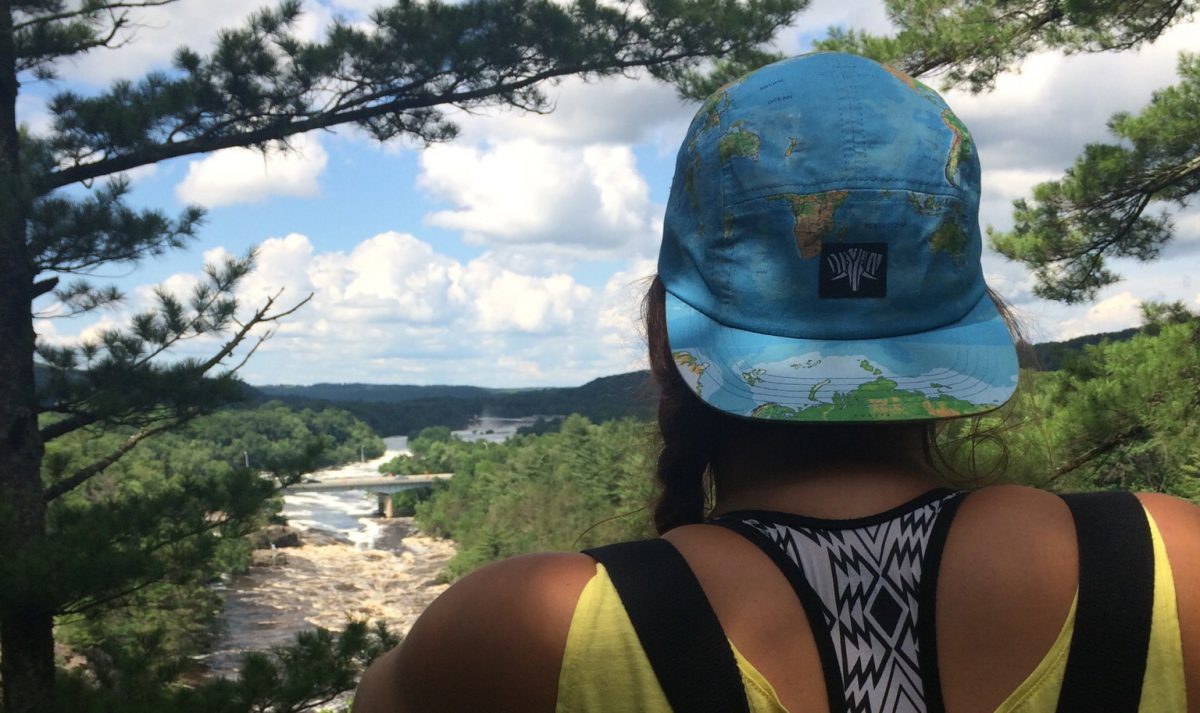The smell of bleach going up the staircase is overwhelming, but I suppose that smell is far better then the stink of the camps from which these refugees turned residents came. They call them residents here, a word that humanizes the people, misplaced in a world where ‘refugee’ comes with the image of a dirt-smudged face and a malnourished body.
The group of white, American journalists standing in a semi-circle and barraging the guide with questions served simply as a hide-and-go-seek barrier for three small boys, ages 6 – 11 if I had to guess. Using my skirt as a shield before lunging out to run again, there was no fear of strangers on their faces, marked only with sun-kissed freckles and smile lines. I forgot for a moment that I was in a refugee resettlement apartment complex and not on a playground back in the States.

While the yellow and red mural overhead read “HOME” that is only a half-truth for the boys and the other 90 residents of the complex. The apartment serves as a sort of half-way house for refugees at the top of the ‘at risk list’. The end goal of the families is either relocation with their whole clan in Germany, Portugal or somewhere else, or reunification with the other members of their families, already settled somewhere safer in the European Union (EU).


The limbo between normalcy and what one would expect from a refugee hostel was something new to me. A sign for women’s yoga at 5 p.m. hangs in the lobby along with one for an Arabic class being held both Monday/Thursday and Sunday/Wednesday. A glance to the left and you are taken back into crisis mode with a barren bookcase and the counseling services number and emergency response contact posted in case of a conflict between residents.

The same is true in the basement level, used for storage and donations. Among the many boxes of clothes, toys and personal care items is assorted rubble, not bothered to be moved by the 5 volunteers working that day. An old bathroom door sits in the corner, off its hinges, with a faded “W.C” sticker on its center. Pipes and old plaster sit near the door, making up what appeared to be a restroom for ghosts.
Not to say that the whole room was abandoned. Far from it, the workers sorting clothes smiled at their humanitarian task and at me when I shyly said hello. An entire warehouse-sized room was filled with clothing for every age, shape and size, encouraging to see such a surplus. The same was said for fresh food, sanitary products and more so than anything else, there was no shortage of camaraderie.

Walking back out into the warm light of the late afternoon, we rounded the brightly colored building once more to find a middle-aged man, a women of around the same age and a child sitting outside, being watched by a brown basset hound in the olive grove across the yard. Again, I was back in the states with a family and not with a group of misplaced persons.

On the way back to the bus, having the luxury and privilege to return back to the life of an American tourist, I passed under the bright mural reading “HOME” and it made some sort of sense to me. Despite the lack of permanence of this home, the world keeps turning. Kids play hide-and-seek weaving in and out between the legs of strangers, a fully equipped barber shop sits across from a fertile olive grove and there is a list of tasks to be completed for the following week.



Right here is the right website for everyone who hopes to find out about this topic. You understand a whole lot its almost hard to argue with you (not that I personally will need to…HaHa). You definitely put a brand new spin on a subject that’s been written about for decades. Wonderful stuff, just great!
LikeLike
Hi there, I enjoy reading all of your post. I wanted to write a little comment to support you.
LikeLike